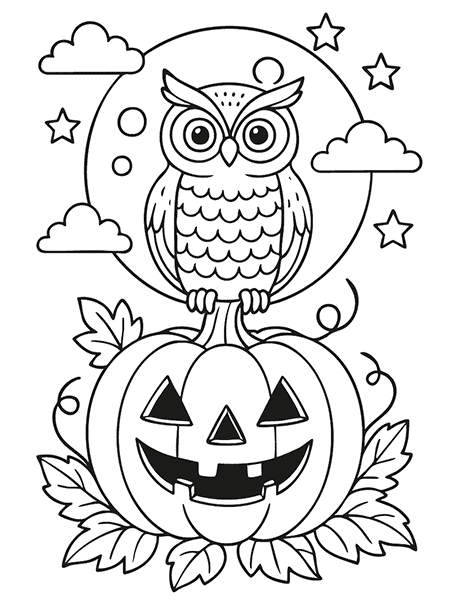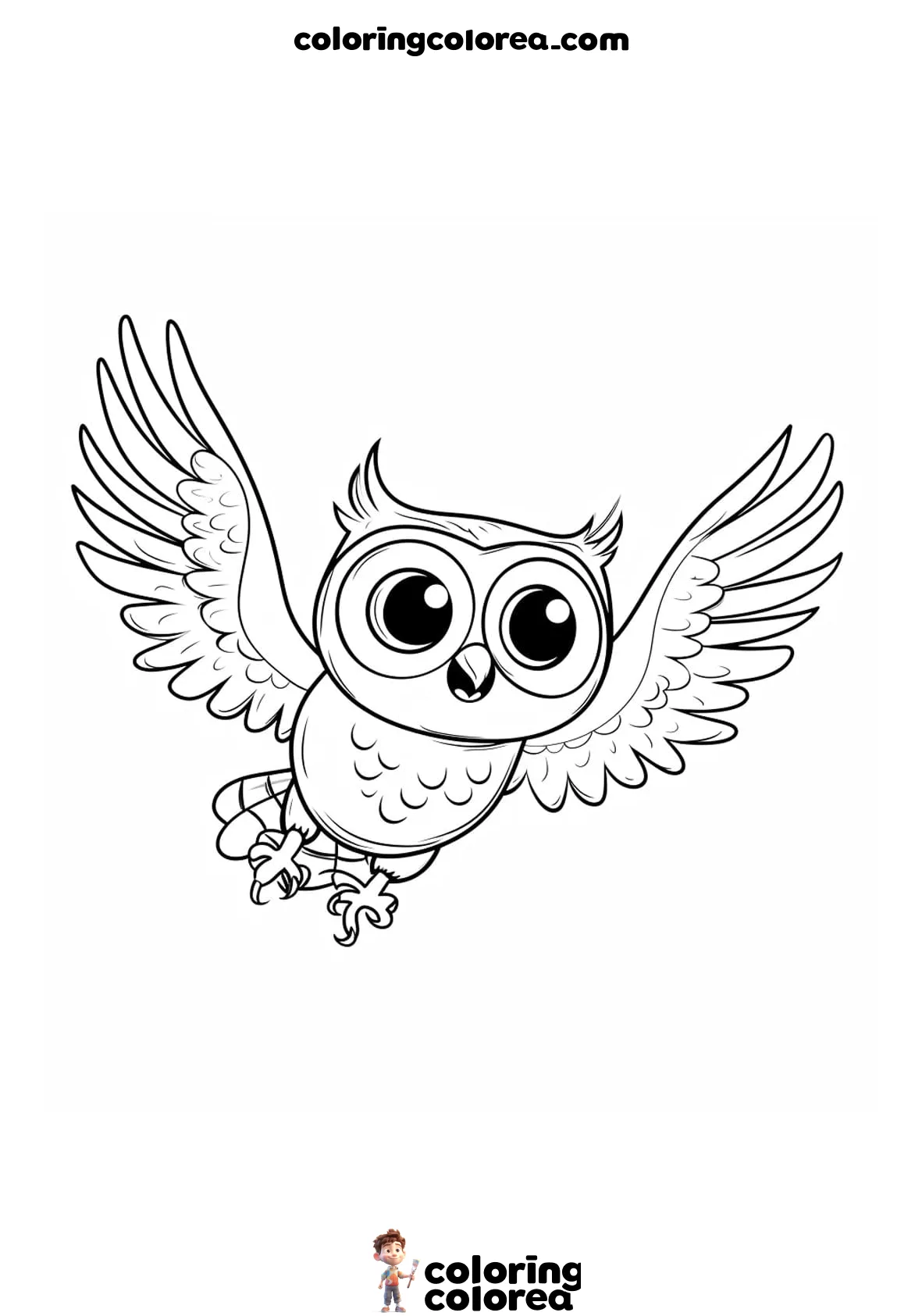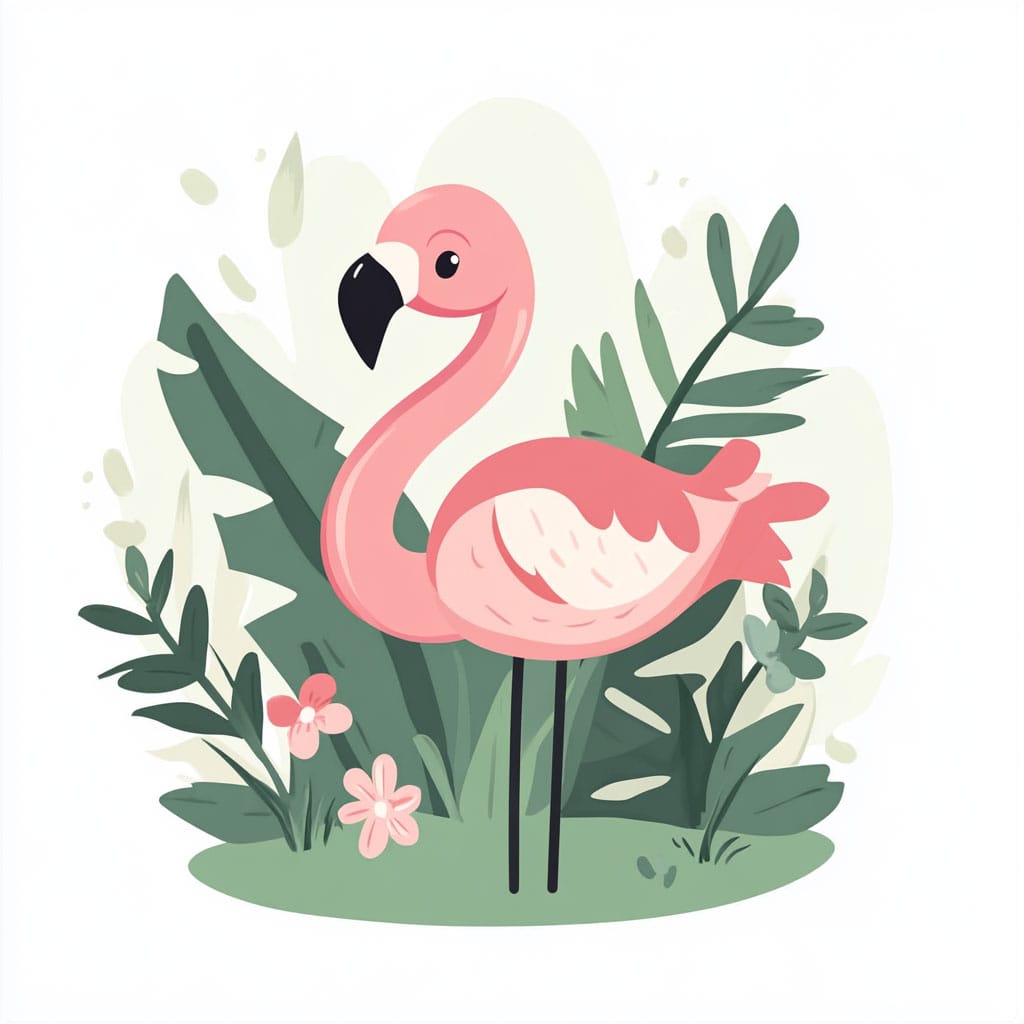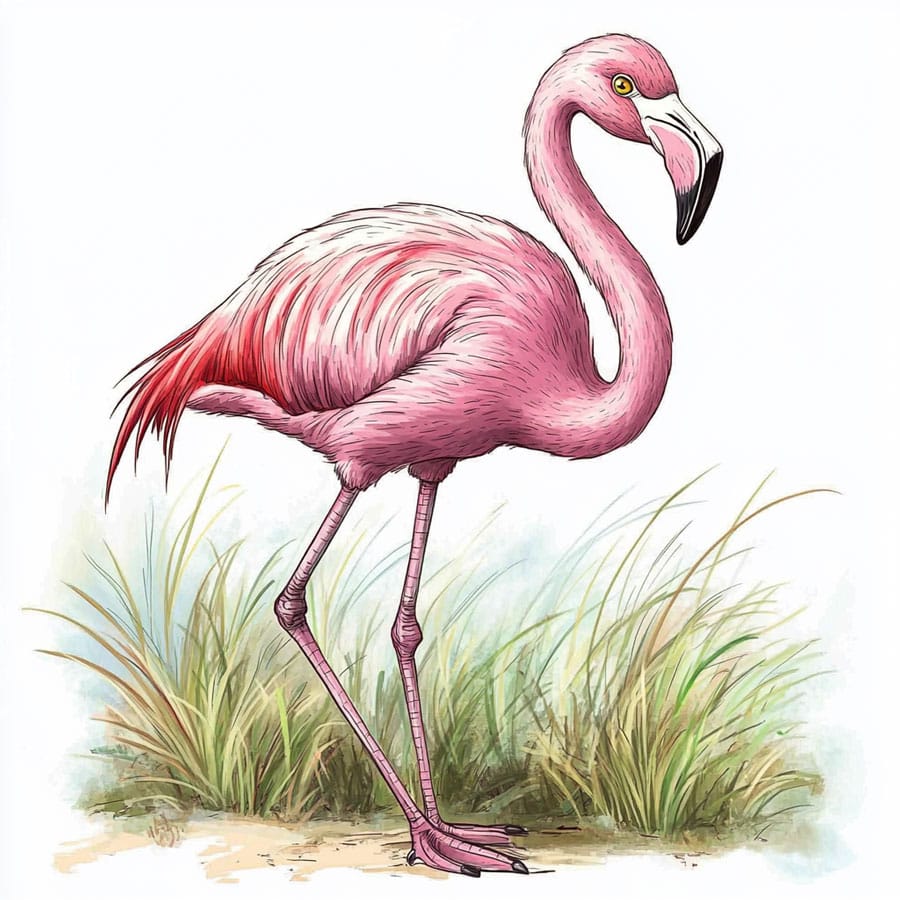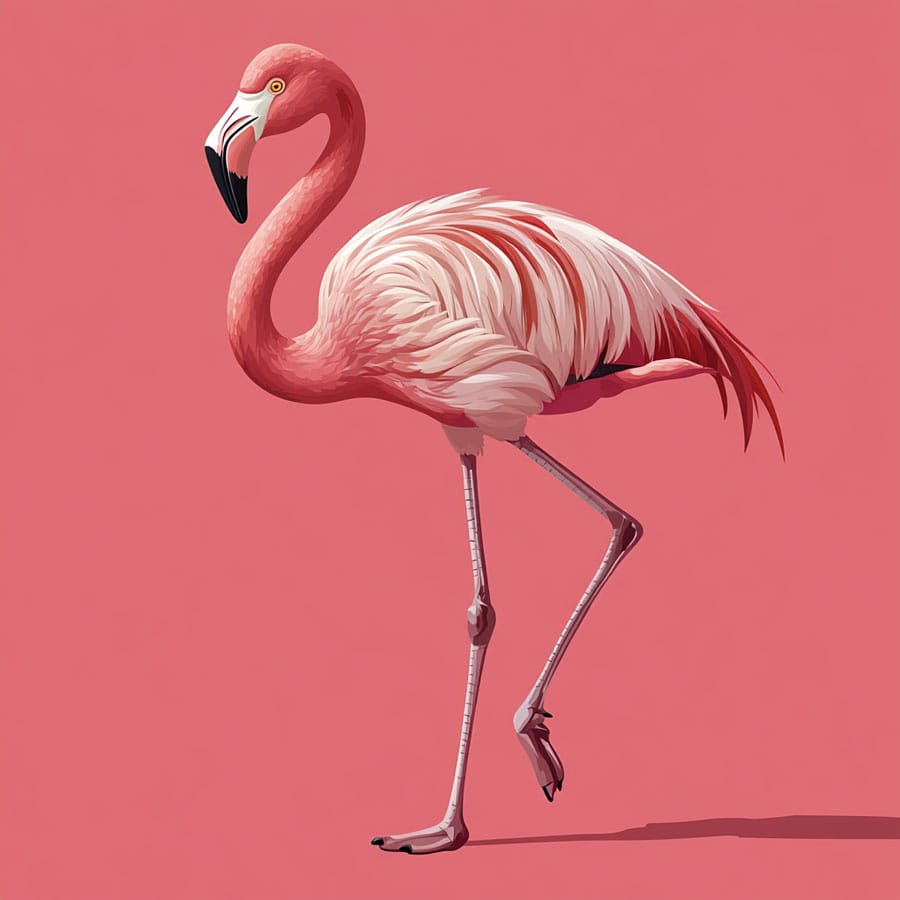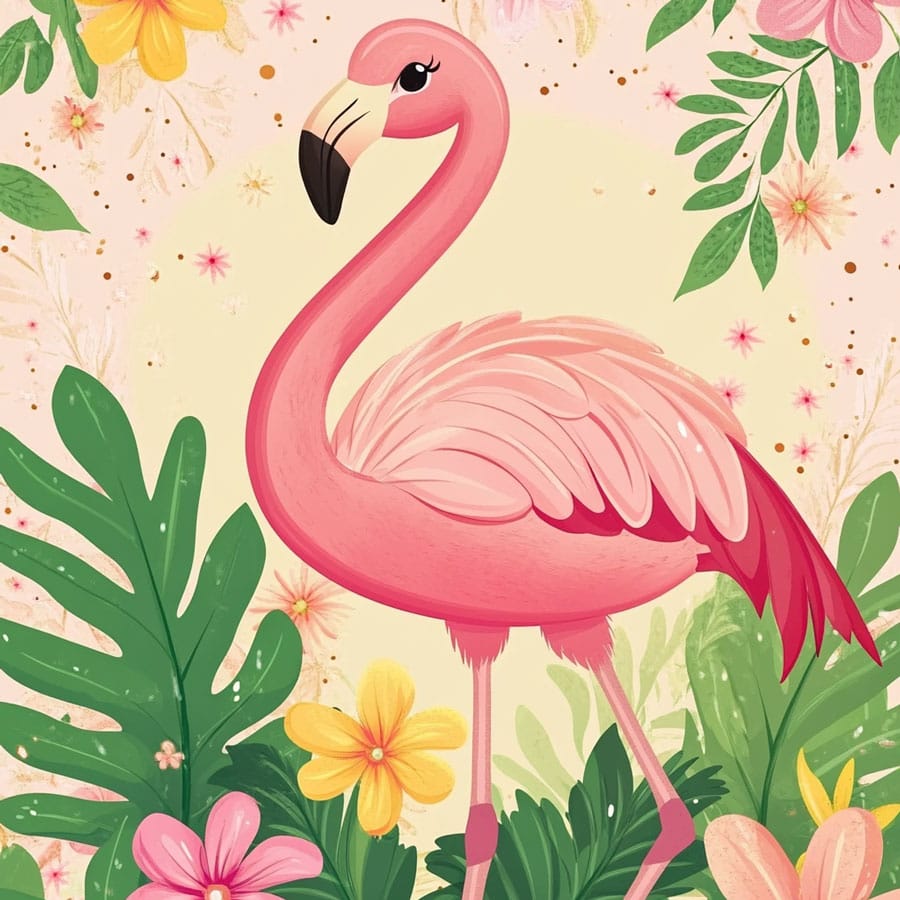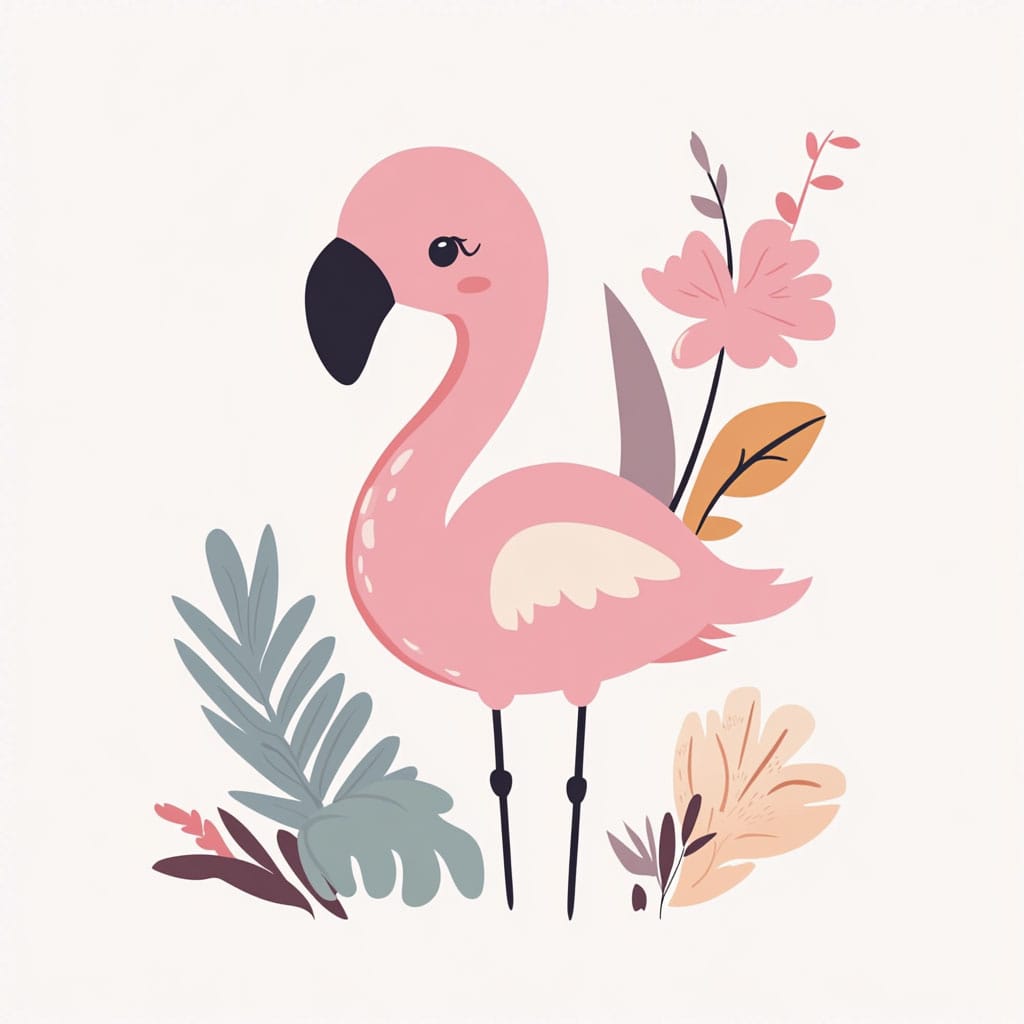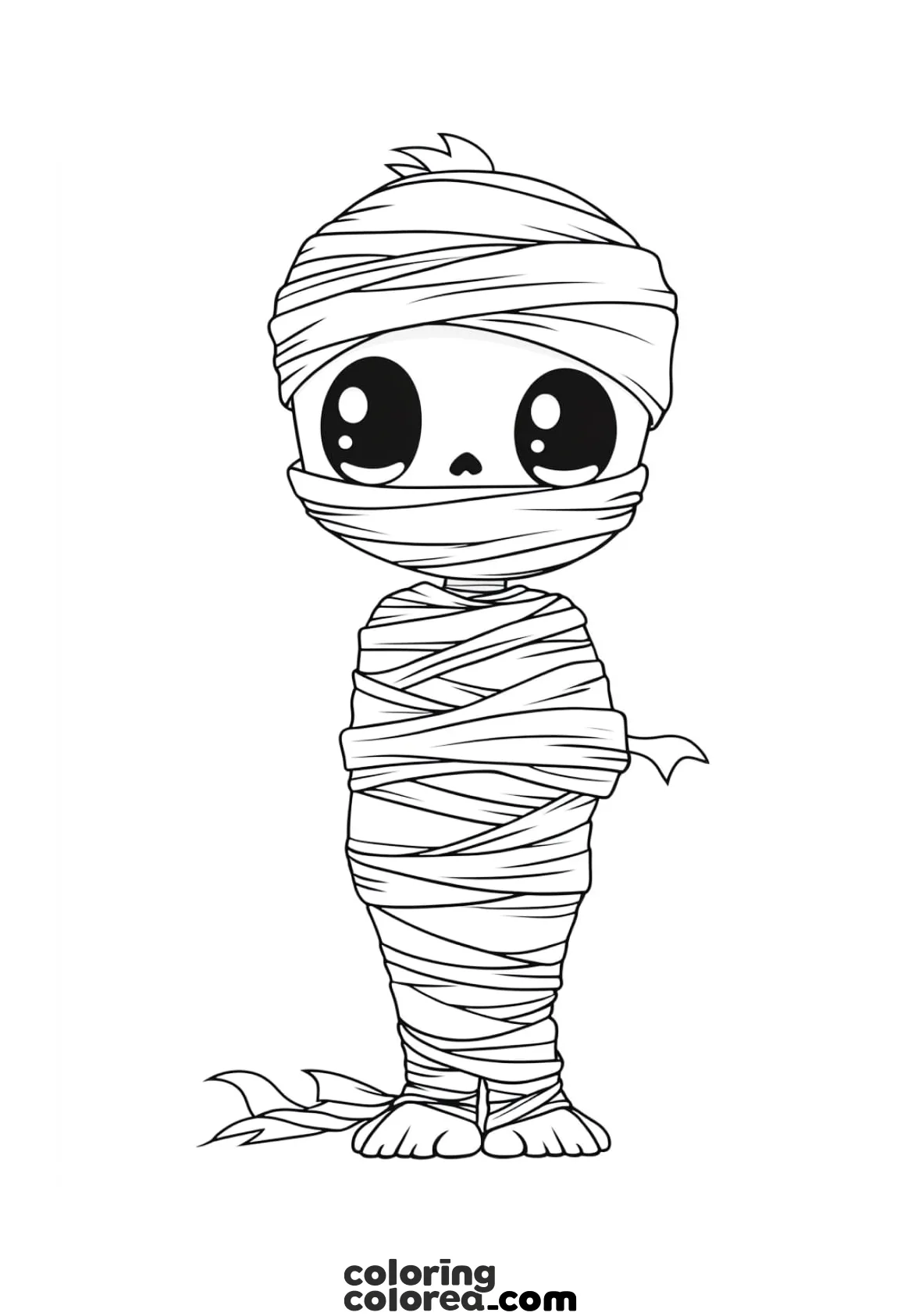Ideas and Tips for colouring the flamingo family
This picture has many layers and details. The first thing to do is decide what kind of feeling you want to create. Do you want everything to look super bright and happy? Or maybe you prefer soft, calm tones, like a peaceful afternoon in nature. Both can work beautifully—you just have to choose how you want your flamingo family to feel.
The adult flamingos are the stars of the drawing. Flamingos usually have a pink color that can range from very pale to deep coral pink. Start by coloring them with a light pink base using colored pencils. Then, add shadows and depth with a darker pink or a soft coral in the areas where the feathers curve—like under the wings or around the neck. These are the parts that would naturally look a little darker. To blend the colors smoothly, you can use a paper blending stump or even a cotton swab.
The baby flamingo is usually grayish when it’s small. Try mixing warm greys with a hint of beige or soft pink to make it feel fluffy and alive. You don’t need to color it perfectly—leave some tiny white spaces for light reflections and to show its texture.
The large leaves in the background can have all kinds of green shades. Don’t use just one green—try mixing emerald green, olive green, and even some blue tones for the shadows. Some leaves can be darker to push them into the background, while others can be lighter to make them pop forward. That will help your flamingos stand out.
The tropical flowers are perfect for experimenting with bold, bright colors. You can use reds, fuchsias, oranges, or even a mix of pink and purple. The center of the flower can be darker, almost burgundy, to give it more volume and make it look like it’s glowing from the inside.
Now look at the water. Instead of coloring it all the same shade, think of it as a surface that reflects the sky and the plants. Use a mix of light blue, soft turquoise, and even a bit of white. Draw gentle, horizontal strokes to create movement. If you want, you can add a faint reflection of the flamingos’ legs in the water—it’s a small detail, but it brings a lot of realism.
Challenges and difficulties
One of the main challenges in this drawing is keeping everything from looking the same. There are lots of feathers and lots of leaves. If you color them all with the same tone, the picture might look a little flat. So even if you’re only using a few colors, make sure to create variations: press harder in some areas, mix in other colors, and leave some light spots.
Another tricky part is the background. If you color everything too boldly, the whole image might feel crowded. It’s okay to leave some parts lighter, or even white. That way, the flamingos—who are the focus of the scene—will stand out more.
Drawing feather textures can also be tough. Try not to just “fill in” the wings. Instead, follow the direction of the feathers with short, curved strokes. Pay attention to where they overlap. Press harder where shadows would naturally fall and go lighter on top where the light hits.
Small spaces like the baby flamingo’s legs or the water between their toes need special care. Use a very sharp pencil or a fine-tip marker. Color slowly and carefully. And don’t worry if it’s not perfect—it’s more important to show life and personality.
Also, don’t rush. This is a drawing that deserves time. Every flower, every leaf, every feather adds to the story you’re creating.
A closer look at flamingos
Flamingos are truly fascinating animals. Their pink color comes from what they eat—mainly shrimp and algae full of natural pigments. Without that special diet, their feathers would actually be gray or white!
They have long, bendy necks that they use to search for food in shallow water. Their legs are super thin and very long, which helps them walk through lagoons and wetlands without getting their feathers wet.
Flamingos are very social birds. They live in huge groups that can include thousands of individuals. When they all move or make sounds, it’s like watching a sea of pink music. They make trumpet-like noises to communicate, and they often move together in beautiful, slow dances.
Did you know that flamingos build volcano-shaped nests out of mud? In those nests, they usually lay one single egg. Both parents take turns keeping the egg warm, and they’re super careful with their little one—just like in the drawing.
Some flamingos have even become famous! For example, “Flamingo James” from the San Diego Zoo lived for more than 40 years and was known for dancing every time he heard classical music. They may look delicate, but they’re very strong and full of personality.
Coloring this picture is not just about making something pretty. It’s about honoring how amazing these animals are. It’s a way to explore their world—the warmth of the tropics, the shimmer of the water, and the love inside a flamingo family. Take your time, enjoy each part, and let your imagination fly, just like a flamingo taking off from a lagoon.
Do you want to know more about flamingos? Clic here

